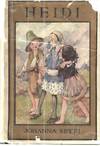
A Harlot's Progress
by RIEPENHAUSEN, Ernst Ludwig (after HOGARTH, William)
- Used
- Condition
- See description
- Seller
-
New York, New York, United States
Payment Methods Accepted
About This Item
Ernst Ludwig Riepenhausen, 1850. Six engravings. Image 6.5 x 8.5". Sheet measures 10.5 x 14.75".<br/><br/> Determined to prove that eighteenth-century society could witness tragedy and moral catharsis in their own time and city, rather than only in paintings of Ancient Greece or the New Testament, William Hogarth created this modern moral series about a naïve young woman who is seduced into prostitution and suffers the terrible consequences for her transgressions. Throughout the series, Hogarth meant to highlight the many temptations and hypocrisies prevalent in urban life. No one is without blame, neither the protagonist nor the city and religious authorities who are in charge of regulating crime and sin, and therefore, all of these figures appear and are critiqued in Hogarth's renowned satire. In the first plate, young Moll Hackabout has recently arrived from the country and is immediately praised for her fresh beauty by a prosperous-looking matron. Unfortunately for her, the matron is Mother Needham, a notorious bawd in eighteenth-century London. Moll's prospective fallen virtue is foreshadowed by the minister's horse knocking over some buckets as two men--a rake and a pimp--watch the scene. The second plate shows Moll as a pampered courtesan and mistress to a wealthy Jewish merchant. Unbeknownst to Moll's benefactor, her lover is sneaking out the backdoor struggling to carry his sword and clothing. Moll attempts to distract the merchant by knocking over the table sending the tea-set crashing to the floor. In the third plate, Moll now works as a common prostitute in Convent Garden. All around the room are scattered souvenirs of Moll's various lovers, which include a wig box above Moll's bed belonging to James Dalton, a well-known highwayman who was eventually hanged in 1730. In the background, Justice John Gonson, a social reformer and famous raider of disorderly houses, enters with his bailiffs to arrest Moll for prostitution. During the time that "A Harlot's Progress" was published, there was a new civil enthusiasm for cracking down on prostitution and here, Hogarth mocks the inept system which did not prevent Moll's seduction but still punishes her for her misdeeds. The fourth plate finds Moll in prison, forced to beat hemp for rope-making. Another woman fondles Moll's fabric and winks at the viewer while Moll also gazes at us in despair. Many of the other prisoners have been incarcerated for prostitution and debt.The fifth print finds Moll released from prison and now dying of syphilis in a dingy room beside her young son. All seems lost as her physicians dumbly argue over their prescriptions while Moll's attendant attempts to protect her from any more of their purgative treatments. In the final plate of the series, all of Moll's "friends" gather around her coffin. However, most of the mourners are more preoccupied with themselves or each other than with their friend's unfortunate passing. Here, Hogarth gives the viewer little comfort, as a young prostitute looks upon Moll in her casket in a clear allusion to her own fate. The series was first displayed as oil on canvas and later engraved by Hogarth for wider publication in 1732. This edition is after Hogarth and engraved by Ernst Ludwig Riepenhausen circa 1850 for a German collection of Hogarth's works, "Erklärung Hogarthischen." Although the prints are stained and foxed, this wear still doesn't distract from the beautiful quality of the engraving of the Riepenhausen edition. William Hogarth (1697-1764) is considered by many scholars and print enthusiasts as the grandfather of English graphic satire, but he was also an accomplished oil painter, portraitist, engraver, and draughtsman. Hogarth mastered the art of depicting human nature and all of its hypocrisies in society with graphic satire. The universality of his humor and the all-too-human characters featured in his works make Hogarth's satires remarkable. This print represents the epitome of Hogarth's skills as an artist and as a conscientious observer of humanity.<br/><br/>
Reviews
(Log in or Create an Account first!)
Details
- Bookseller
- Argosy Book Store
(US)
- Bookseller's Inventory #
- 247275
- Title
- A Harlot's Progress
- Author
- RIEPENHAUSEN, Ernst Ludwig (after HOGARTH, William)
- Book Condition
- Used
- Quantity Available
- 1
- Publisher
- Ernst Ludwig Riepenhausen
- Date Published
- 1850
- Keywords
- prostitution, harlot
Terms of Sale
Argosy Book Store
All items are offered net, subject to prior sale. Returns accepted within 7 days of receipt--please contact us first. Payment by Visa , Mastercard & American Express. Appropriate sales tax will be added for all N.Y. State residents
About the Seller
Argosy Book Store
Biblio member since 2004
New York, New York
About Argosy Book Store
We are a large retail store, with 6 floors of out-of-print and rare books, (including, Americana, modern first editions, history of medicine and science), antique maps and prints, autograph manuscripts, letters & signatures.
Glossary
Some terminology that may be used in this description includes:
- Plate
- Full page illustration or photograph. Plates are printed separately from the text of the book, and bound in at production. I.e.,...
- New
- A new book is a book previously not circulated to a buyer. Although a new book is typically free of any faults or defects, "new"...
- Foxed
- Foxing is the age related browning, or brown-yellowish spots, that can occur to book paper over time. When this aging process...

